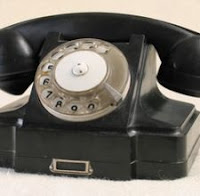All alarm companies that provide equipment with no up front cost require a contract-usually 3 years. (Although 2-5 years is the range) This is to recover the costs they've incurred for equipment and installation. All of these contracts are auto-renewing for a period of time if the customer does not proactively cancel with a minimum of the industry standard 30 days notice prior to the initial agreement being up. This is usually outlined by a representative for a reputable alarm company at the time the initial paperwork is signed.
Typically the first document you will sign is the "Notice of Cancellation." This document outlines the fact that your alarm contract will not be in effect until three business days after the alarm is installed and activated. This is to give you a period of time to proactively cancel without penalty or obligation if you object to any part of the transaction. Once this period of time has passed, you are locked into the terms of the contract including any early termination fees.
If the person you are signing paperwork with does not take the time to go over the pertinent details of the contract with you, then you need to take thoroughly review the contract within your 3 business day cancellation window to ensure you understand the agreement and can cancel if you object to the terms.
 I personally use Central Security Group for monitoring the contract systems I install. I chose Central because they require every new contract customer sign a "No Secrets" document that clearly outlines the terms of the agreement in plain English so there is no room for any misinterpretation on the part of the consumer. I go over this document in detail with each and every customer. Not every alarm company has a "No Secrets" form, but all will have the full terms of the contract printed on the agreement itself. Read each document and make sure it is clarified to your satisfaction before you sign.
I personally use Central Security Group for monitoring the contract systems I install. I chose Central because they require every new contract customer sign a "No Secrets" document that clearly outlines the terms of the agreement in plain English so there is no room for any misinterpretation on the part of the consumer. I go over this document in detail with each and every customer. Not every alarm company has a "No Secrets" form, but all will have the full terms of the contract printed on the agreement itself. Read each document and make sure it is clarified to your satisfaction before you sign.
If you do not wish to be under contract, you always have the option of purchasing equipment and installation up front. You can then engage monitoring services on a month to month basis with a monitoring center that offers short or no contract service. This option involves a large out-of-pocket expense, but leaves you without the long term contractual obligation. Be prepared that the most basic alarm system in a modest home with installation is going to start in the $800-$1000 range. If you live in a large residence, or add items you want to make your house fully secure and the cost could easily climb significantly higher. Compare this to a typical three year contract and you'll find that signing a contract is often cheaper overall.
As a consumer, you should weigh your options and make an informed decision based on the facts. You ultimately have the power to decide what is in your best fiscal interest. Read contracts, ask questions and walk away from anything that doesn't "feel" right.
















